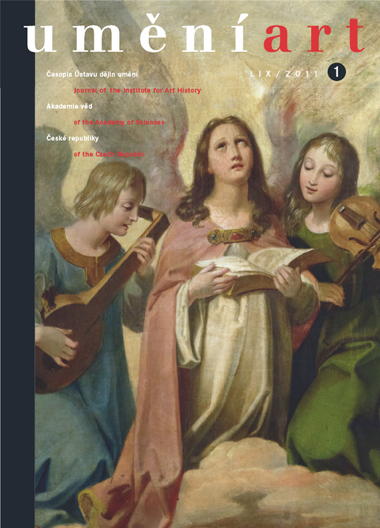Pavla Machalíková
Zázemí řemesla a perspektivy akademických studií. K ranému dílu Josefa Führicha v Čechách
Studying the early works that the artist Josef Führich created in Bohemia before his move to Rome helps to elucidate the role he played in efforts to establish and form the character of a Czech national school in contemporary painting. It also reveals the links between the academic work of this artist, seen in Prague as a leading representative of the Altdeutsch style, and his officially commissioned works intended for traditional clients and the public. Josef Führich found his start in painting in his father's workshop in Chrastava, where, while still very young, he worked on commissions that were destined for a folk setting. Written sources show that he was fundamentally influenced not just by his father but also by the everyday contact his work brought him into with displays of popular devotion, the intense experience of Catholic rites, and a religiously (and piously) accentuated perception of the landscape. This had a powerful influence on the development of his subsequent work: after joining the Academy in Prague he became one of the top representatives of the Prague Nazarene movement (the Serapion Brethren) and a proponent of reforming contemporary painting by leaning more towards the old masters (particularly Dürer). Thus he made a mark for himself as one of the illustrators of the book Dějin Čechů v obrazech (An Illustrated History of the Czechs), but in connection with the 1824 'Romantic' exhibition in Prague he also became the target of sharp criticism because of his Altdeutsch orientation. In the 1820s he worked on commissions for altar paintings for a number of churches in northern Bohemia, roughly in the vicinity of his native Chrastava (Raspenava, Hodkovice, Mikulášovice, Nové Město pod Smrkem). Their record refutes Moriz Dreger's theory about the absence of any larger commissions among Führich's early work and also shows how the painter, regarded as a pioneer of the new style, managed to adjust himself to doing a traditional type of commission for an artistically more conservative public. An analysis of his greatest paintings from around the mid-1920s indicates that he managed to integrate certain elements inspired by older art with his contemporary academic training.
Full-text in the Digital Library of the Czech Academy of Sciences:
https://kramerius.lib.cas.cz/uuid/uuid:07ad476a-fdd3-549d-6b17-b8784cb340c3
< back

